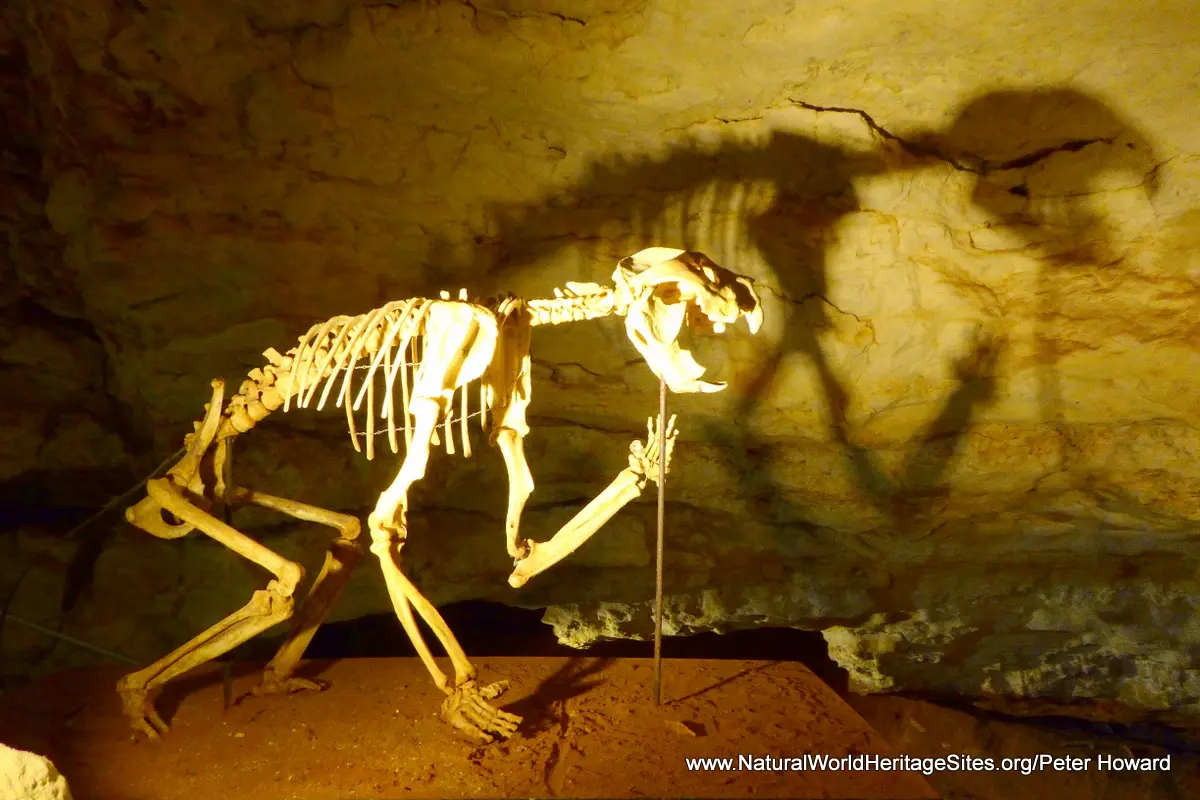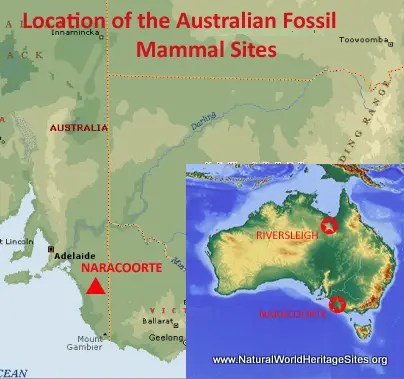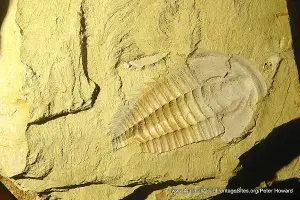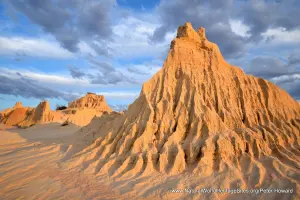EXPLORE the Australian Fossil Mammal Sites (Riversleigh/Naracoorte) with this slideshow, check the location map and get all the facts and information below.
For slideshow description see right or scroll down (mobile). Click to view slideshow
Location and Values: The Australian Fossil Mammal Sites (Riversleigh/Naracoorte) are located at opposite ends of the country – some 2,000 km apart – in north-west Queensland (Riversleigh) and south-east South Australia (Naracoorte). Each site provides a remarkable insight into the evolution of Australia’s unique mammal fauna over the past 30 million years, with the two sites complementing one another by revealing fossils from two quite distinct periods. The fossils at Riversleigh are from an earlier period, 10-30 million years ago, while those at Naracoorte cover the 530,000 years from the mid-Pleistocene to the present day. Together, they help us understand how the Australian fauna has evolved, adapting as the climate became progressively more arid, and responding to the arrival of humans. The fossil discoveries at Naracoorte include some exceptional examples of the extinct Australian ice-age megafauna – giant mammals, birds and reptiles reminiscent of those that still roam the plains of Africa.
Conservation Status and Prospects. According to IUCN’s Conservation Outlook Assessment (2017) the conservation status of the Australian Fossil Mammal Sites (Riversleigh/Naracoorte) is ‘good’. The IUCN report notes that ‘while a number of threats and other issues affecting the property exist they are all minor and do not impact upon the Outstanding Universal Value of the property. The current state of World Heritage values continues to be good, because overall threats at the moment are very low, although higher at Riversleigh. At the present time, site protection and management are effective. Accordingly, the conservation outlook remains good but there is concern regarding the sustainability of funding and consequent effects on attaining and managing future research. The unique aspect of the Australian Fossil Mammal Sites (Riversleigh/Naracoorte) is that their value lies in knowledge and understanding, a value which should be constantly pursued and enhanced. The addition of sustainable funding as a key performance indicator would be beneficial. Such an indicator should reflect current and sustainable funding models that contribute to education, protection and management. ’
Links:
Google earth
Official UNESCO Site Details
IUCN Conservation Outlook
UNEP-WCMC Site Description
Slideshow description
The slideshow ‘tells the story’ of the Australian Fossil Mammal Sites (Riversleigh/Naracoorte) with a portfolio of photos by Peter Howard taken during a visit to Naracoorte in December 2017. Outside the main visitor centre is an impressive life-size statue of Diprotodon australis, the largest marsupial to ever live in Australia, while the modern foyer of the centre exhibits some beautifully reconstructed skeletons and reconstructions of some of the extinct megafauna, including the giant snake, Wonambi naracoortensis constricting its prey and a 200kg giant kangaroo, Procoptodon goliath. At the reception visitors are able to book guided tours to a few of the principal caves, and this is essential to get an understanding of the site. The next part of the slideshow illustrates the guided tour of Victoria Cave – the prime showcase cave for fossils, with a number of chambers where exposed fossils can be seen, and one main chamber adapted as a small ‘amphitheatre’ around reconstructed skeletons of the iconic ‘marsupial lion’, Thylacoleo carnifex and a giant browsing kangaroo, Simosthenurus occidentalis. Back at the visitor centre there’s an opportunity to experience what the area would have been like 200,000 years ago, with life-size animated models of some key species in a reconstructed natural environment at the Wonambi Fossil Centre. There are some eye-catching models of marsupial lion, thylacine, Diprotodon, a 4-metre giant goanna lizard, an extinct giant koala and a hippo look-alike, Zygomaturus trilobus.
The slideshow continues by illustrating a visit to the bat cave teleview centre (where visitors can view real-time remote video of the roosting bats that occupy the bat cave below) and the impressive open chambers of Blanche Cave. A couple of photos show the chambers of the Stick-Tomato (or Wet) Cave, the only (rather small) cave that is open to the public for self-guided visits. The last part of the slideshow covers the Alexandra Cave, where the site’s most impressive cave formations (speleothems) can be seen.
Factfile
Website Category: Fossil Record
Area: 103 km2
Inscribed: 1994
Criteria:
- Fossil record (viii);
- Ecological processes (ix);





